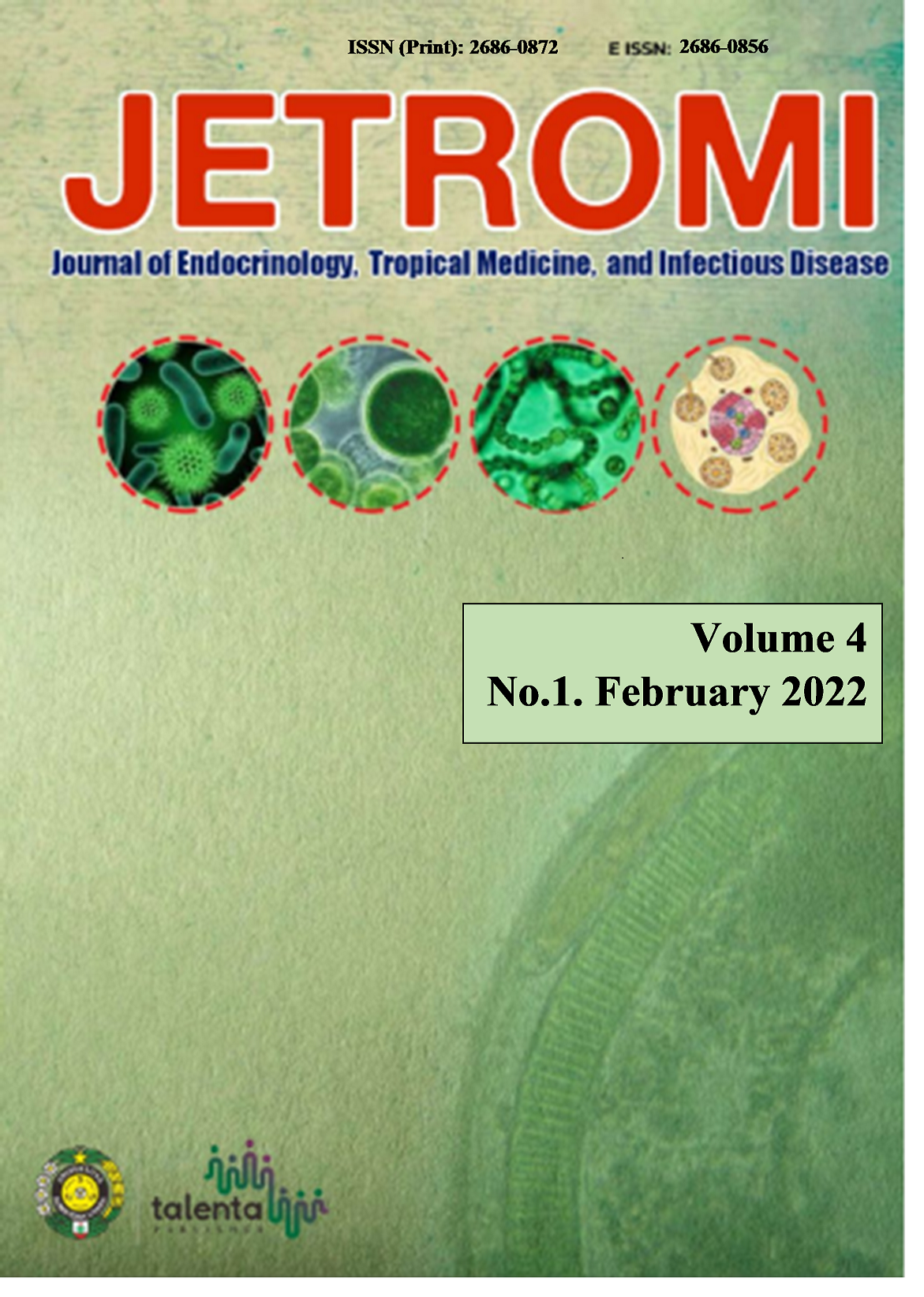The Correlation Between Grade of Non-Alcoholic Fatty Liver Disease and Lipid Profile in Type 2 Diabetes Mellitus
DOI:
https://doi.org/10.32734/jetromi.v4i1.8488Keywords:
NAFLD, T2DM, Lipid ProfileAbstract
Background. Non-alcoholic fatty liver disease (NAFLD) is a form of metabolic liver disease in which fat changes (steatosis) are associated with lobular inflammation, hepatocyte injury, polymorphs, or liver fibrosis. The study aimed to assess the relationship between NAFLD grades and lipid profiles in T2DM.
Method. The design of the study was cross-sectional with the dependent variable being the grade of NAFLD and the independent variable being profile lipid. The sample of this study was NAFLD sufferers who met the inclusion criteria and were taken on a consecutive sampling basis. Diagnosis of NAFLD from anamnesis and physical, examination. Laboratory and abdominal ultrasound (Sonata SG 30 Ultrasound). Stages of NAFLD are divided into Degree I, Degree II, and Degree III. Lipid profile examination is carried out using a spectrophotometer tool colorimetric enzymatic method.
Result. All patients are T2DM, consisting of Grade 1: 32 (40%), Grade II: 29 (36%), and Grade III: 19 (23%) patients. There was a significant difference between TC, TG, and LDL-C (p < 0.01) in the three grades of NAFLD. There is a significant correlation between NAFLD grade with TC and LDL-C (p < 0.05).
Conclusion. In T2DM, there is a significant correlation between NAFLD grades and TC and LDL-C, and there was a significant difference between TC, TG, and LDL-C in the three grades of NAFLD.
Downloads
Downloads
Published
Issue
Section
License
Copyright (c) 2022 Journal of Endocrinology, Tropical Medicine, and Infectious Disease (JETROMI)

This work is licensed under a Creative Commons Attribution-NonCommercial-ShareAlike 4.0 International License.
The Authors submitting a manuscript do so on the understanding that if accepted for publication, copyright of the article shall be assigned to Journal of Endocrinology, Tropical Medicine and Infectious Diseases (JETROMI).
Copyright encompasses exclusive rights to reproduce and deliver the article in all form and media. The reproduction of any part of this journal, its storage in databases and its transmission by any form or media, will be allowed only with a written permission from Journal of Endocrinology, Tropical Medicine and Infectious Diseases (JETROMI).








